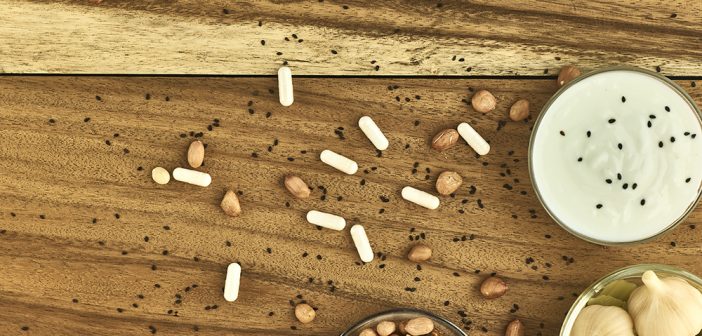The probiotics diet… Ever heard of it? There are a lot of diets out there — some better than others.
The Atkins diet, the South Beach diet, the Weight Watchers diet, and the Paleo diet are all popular ones that my friends and family have tried. My dad even once tried the popsicle diet and the carrot diet, where he ate nothing but popsicles and carrots.
For me, diets are frustrating, because I’m addicted to carbs, sugar and caffeine.
But with hundreds of probiotics on the market, how can I tell the good from the bad? Kiran Krishan, a Chicago-based research microbiologist focused on the dietary supplement and nutrition market for the past 16 years, states that survivability, quality, and multi-functionality are three of the main qualities to look for in a good probiotic.
Survivability
The majority of probiotics on the market — including those found in dairy and fruit juice containing live bacteria and dry preparations in the form of tablets, capsules and powder — die while passing through the harsh, acidic environment of the stomach, according to a study for the U.K.’s Food Standards Agency.
“Dead probiotics are obviously ineffective,” Krishan says.
Make sure the probiotic is proven to survive long enough to reach the stomach and intestines, and do its job.
Quality
“In reality, if a product hasn’t been verified by DNA analysis, you have no idea what you’re taking,” he says.
This means you need scientifically validated, live strains of probiotics, such as Bacillus Subtilis, Bacillus Coagulans and Bacillus Clausii, to function in the human body and positively influence the 100 trillion other bacteria in your gut. Krishnan says these Bacillus strains are the only supplemental probiotics known to work with fiber to create short chain fatty acids (SCFAs) that increase the body’s metabolism and reduce bloating, cramping and gas.
Multifunctional
Effective
Before choosing a probiotic, do your homework. Ask friends and family who have tried probiotics to see what has worked for them. Also, look for a meal plan that incorporates effective probiotics with other elements of healthy eating. For example, Silver Fern Brand’s recently released eating plan, Elevated, advocates eating high-fiber, low-carb meals with its Bacillus-based probiotic, sold in dietary supplements as well as in its popcorn, baking mixes and meal replacement shakes.
Another popular probiotic using the Bacillus family includes MegaSporeBiotic. It is marketed to health practitioners to help patients with other health issues, including reducing allergies and asthma, urinary tract infections, etc.
With so much research and experiential evidence highlighting the benefits of probiotics, I’m ready to take the plunge. If I pay attention to its survivability, quality, functionality and effectiveness, I’ll have a better chance of choosing the right probiotic that will help with weight and other health benefits.
Now if only I had something to curb my caffeine cravings…
This article was previously published by the Herald Extra and republished here with permission.




